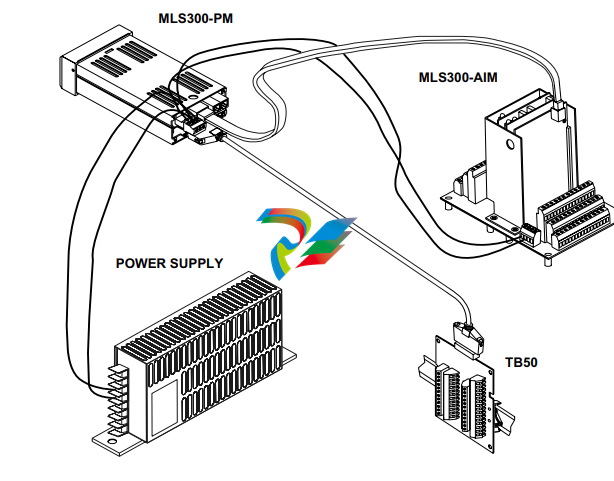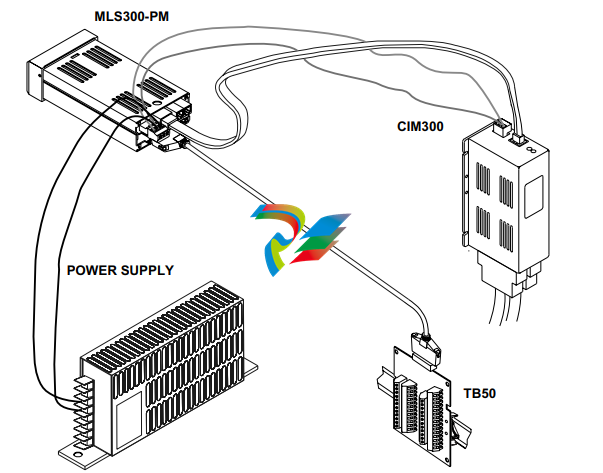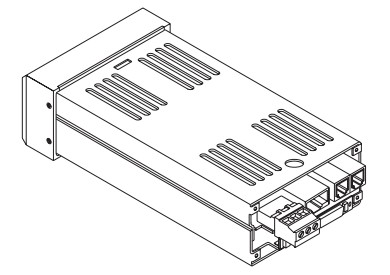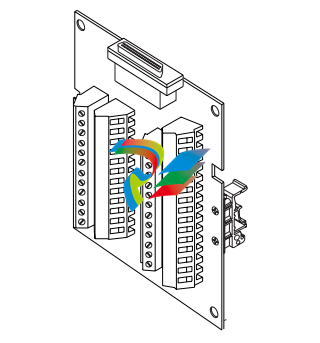
WATLOWMLS300 Series User’s Guide
controller from the front panel or from a local or remote
computer. WatView software is available to configure
and monitor the MLS300 from a PC.
• Modbus RTU Protocol, EIA/TIA-232 and 485
Communications: Connect to PLCs, operator interface
terminals and third-party software packages using the
widely supported Modbus RTU protocol.
• Multiple Job Storage: Store up to 8 jobs in memory, and
access them locally by entering a single job number or
remotely via digital inputs. Each job is a set of operating
conditions, including set points and alarms.
• Non-Linear Output Curves: Select either of two nonlinear output curves for each control output.
• Autotuning Makes Setup Simple: Use the Autotune
feature to set up your system quickly and easily. The
MLS300 internal expert system table finds the correct
PID parameters for your process.
• Pulse Counter Input: Use the pulse counter input for
precise control of motor or belt speed.
• Low Power Shutdown: The controller shuts down and
turns off all outputs when it detects the input voltage drop
below the minimum safe operating level.
MLS300 Series User’s Guide Chapter 1: System Overview
Doc.# 0600-3070-2000 Watlow Anafaze 5
System Diagram
The illustration below shows how the parts of the MLS300 are
connected. When unpacking your system, use the diagram and
parts list below to ensure all parts have been shipped. Please
don't hesitate to call Watlow Anafaze's Customer Service
Department if you have problems with your shipment, or if the
MLS300's components are missing or damaged.


Parts List MLS316/MLS332
You may have received one or more of the following
components. Refer to Figure 1.1 on page 5 and Figure 1.2 on
page 6 for MLS300 configuration information.
• MLS300 Processor Module (PM)
• Controller Mounting Kit
• 16- or 32-Channel MLS300-AIM Module with 4-foot
AIM cable
• 16- or 32-Channel CIM300 Module with 4-foot AIM
cable.
• EIA/RS-232 or EIA/RS-485 Communication Cable
• TB50 with 50-pin SCSI Cable
• Power Supply with Mounting Bracket and Screws
• SDAC (Serial Digital-to-Analog Converter)
• Special Input Resistors (installed in MLS300 AIM)
• User Manual
Technical Description
This section contains a technical description of each
component of your MLS300 Controller.
Processor Module
The MLS300 Processor Module (MLS300-PM) is housed in
an eighth-DIN panel mount package. It contains the CPU,
RAM with a built-in battery, EPROM, serial communications,
digital I/O, the screen and touch keypad.

The MLS300-PM has the following features:
• Keypad and 2-line, 16-character display.
• Screw terminals for the power inputs and outputs.
• Input power is 12 to 24 Vdc at 1 amp.
• The +5 Vdc output power supply of the processor module
powers the MLS300-AIM.
• The MLS300-PM interfaces with the MLS300-AIM with
an 8-pin RJ-45 style connector.
• A 50-pin SCSI cable connects the digital inputs and
outputs to the 50-pin terminal block (TB50).
• The MLS300 uses 6-pin, telephone-style connectors for
EIA/RS-232 and EIA/RS-485 external communications.
The program that operates the MLS300 is stored in a socketed,
flash, static-RAM chip, so it is easy to update or change the
firmware. The MLS300 stores its operating parameters in
battery-backed RAM, so if there's a power loss the operating
parameters are unchanged. The battery has a ten year shelf
life, and it is not used when the unit is on.
The microprocessor performs all calculations for input signal
linearization, PID control, alarms, and communications.
Front Panel Description
The MLS300-PM's display and touch keypad provide an
intelligent way to operate the MLS300. The display has 16
alphanumeric or graphic characters per line. The 8-key
keypad allows you to change the MLS300's operating
parameters, controller functions, and displays.
The MLS300's information-packed displays show process
variables, set points, and output levels for each loop. A bar
graph display, single loop display, scanning display and an
alarm display offer a real-time view of process conditions.
Two access levels allow operator changes and supervisor
changes.

The TB50 is a screw terminal interface for control wiring
which allows you to connect relays, encoders and discrete I/O
devices to the MLS300. The screw terminal blocks accept
wires as large as 18 AWG. A 50-pin SCSI cable connects the
TB50 to the MLS300-PM

MLS300-AIM and AIM-TB
The MLS300 Analog Input Module (MLS300-AIM), consists
of the AIM-TB (AIM Terminal Board) and the AIM’s plug-in
cards. The MLS300-AIM receives input signals from sensors
and transmits this information to the MLS300-PM through the
AIM cable.
The AIM-TB includes power supply terminals, input signal
wiring screw terminals, input signal conditioning circuits, and
terminal connections for the AIM's plug-in cards. It also
includes a cold junction temperature sensor and room for the




























































































































